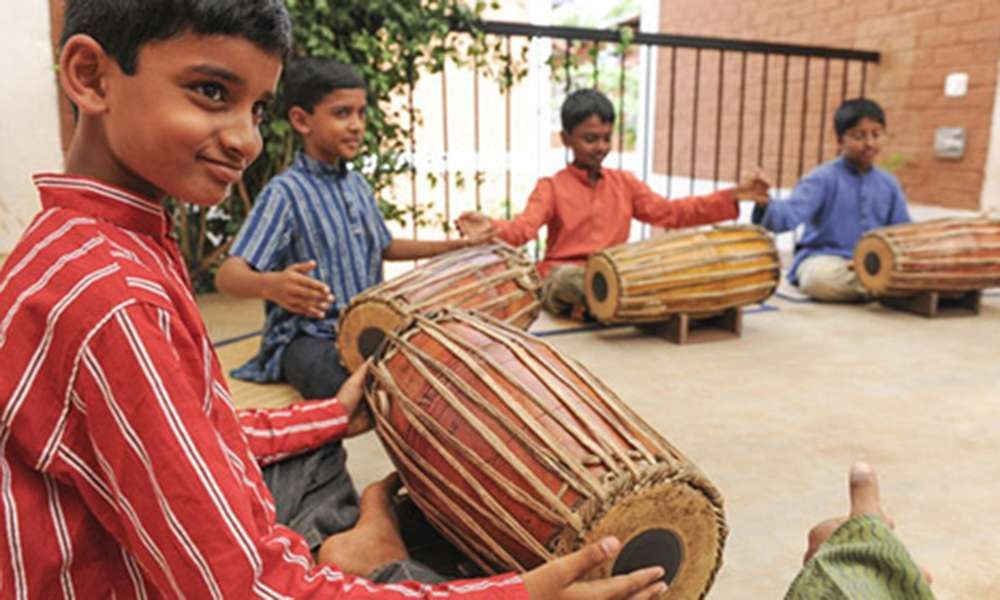Indian Classical Music – The Science and Significance
Sadhguru looks at the science behind Indian classical music and its impact on the human system.

We look at the science behind the intricacies of Indian classical music and its impact on the human system, as yogi and mystic, Sadhguru, interacts with Pandit Jasraj, vocalist and the doyen of the Mewati Gharana of Indian classical music.
Sadhguru: In one dimension of yoga, it is dialectically expressed that the human body is Shiva’s damaru (drum). Shiva always carried a drum because it is symbolic of the rhythm of life. When you run a race or when you are excited or scared, you hear “dhun, dhun, dhun” in your head. This is the rhythm of the body. The rhythm of the body is not just in the beat of the heart. Every fiber and every pranic nadi in the body has its own tune. Every chakra has its own sound attached to it. What is sound and what is your form are not two different things. There is a whole science about sound and the body, which looks at what uttering different sounds or being under the influence of different sounds does to the system.
Every little sound has a certain impact. If you listen to a certain kind of sound, you become loving. Some other sound can make you joyful. Some other sound makes you aggressive. This is happening, isn’t it? Sounds create not just emotions, they also change the very chemistry of your system. So the kind of sounds you are exposed to, and the kind of sounds you generate, do various things to you.
Subscribe
What you call music is a harmonious arrangement of sounds. Music has been a common phenomenon in every culture on this planet and has always been a stepping stone for a spiritual process. Especially with Indian classical music, it is a possibility of walking you through creation, and when possible, to touch the Creator. In Indian culture, music, dance or whatever else you did was not entertainment, it was also a spiritual process. In classical music, the way sound is used – the ragas, the tunes, everything – is such that if you get deeply involved in it, it will bring meditativeness. Classical Indian music has, to a mathematical precision, recognized which sound can do what. If you know how to use sounds, a proper arrangement of sounds can do incredible things to people and to the situation. There are exponents of music who know it by experience.
A 250-year-old painting from Rajasthan depicts a popular folk tale, where Akbar, with Tansen, visits Tansen's teacher, Haridas.
In India, there are stories and legends about various musicians. One of the more famous ones is Tansen. Stories say that when Tansen sang, he could light lamps with his music. It may not be an exaggeration. It could be reality. Whether he actually did it or not we don’t know, but in theory, if you look at it as a science, it is possible that sound can do things that you have not imagined. In our programs like Samyama, just one utterance, “Shiva,” will explode people into a completely different dimension of experience. In your own experience of life, if you are keenly into music, whether it is cinema music or classical music or anything else, music opens up many doors. And if you have the ears to hear, the whole existence is just music.
Today, modern science sees the whole existence as a vibration. Where there is a vibration, there is bound to be a sound. So the whole existence is a complex amalgamation of sounds. These sounds, if you listen in a certain way, are a horrible noise. If you listen to it in another way, it is tremendous music. For one who does not perceive the wholeness of the sound, it is noise because he is hearing in bits and pieces. For one who listens to the wholeness of the existence, everything is music. There is nothing which is not music.
Editor’s Note: Be sure to check out the 50-minute video, Ektara, as Sadhguru and Pandit Jasraj dive further into the beauty and profoundness of Indian classical music.
Get the latest updates from the Isha Blog. Twitter, facebook, rss or browser extensions, take your pick.
Image courtesy: Disguised Akbar with Tansen Visit Swami Haridas from National Museum, New Delhi.


